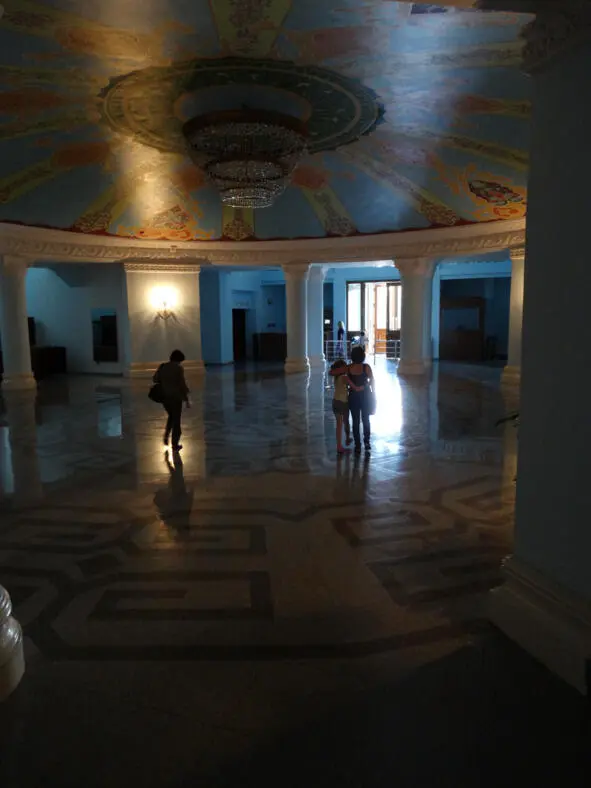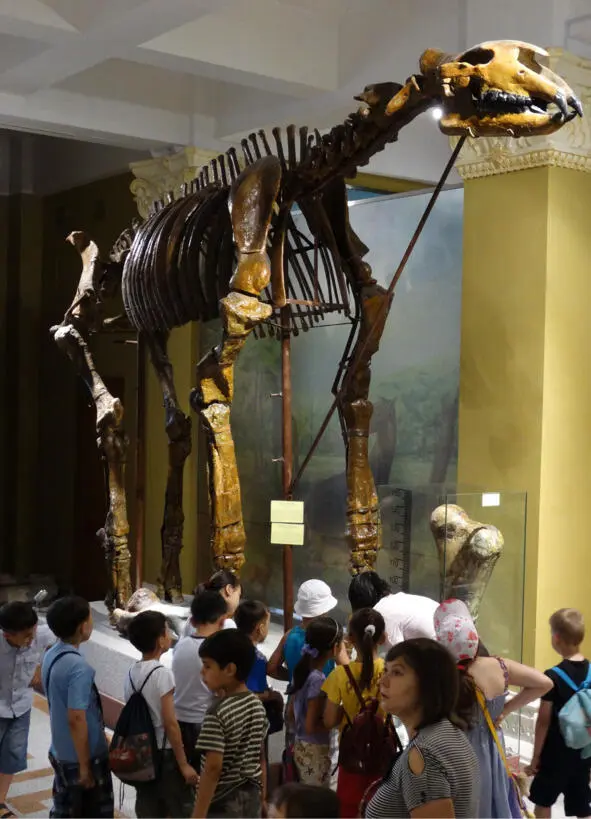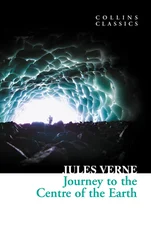Architect – academician made his contribution to the “development of national architecture of sister republics”. Many people saw his beautiful creation in Tashkent – Big Opera and Ballet Theatre. Large place in his postwar biography takes rebuilding of the destroyed cities: Istria, Novgorod and Chisinau. As for our Academy, Shchusev did not see his offspring – he died in 1949…
Why was rejected the first design? The answer was given in the book “Architecture of Alma-Ata” by M. Mendekulov , venerable Kazakhstani architect. The reasons were:

“First, the building had not clearly identified image of the Soviet scientific institution, it had some features of cult building from the past; main facade had massive solid portals and bulky spherical cupola, it resembled madrasas (spiritual schools). And secondly, the decoration of the building had not a national Kazakh ornament, making it look impersonally”.
Construction started by the second design in 1951. From this project were removed not only the “cult” elements, which so irritated officials, but also the co-author of the famous builder of the mausoleum.
Popular memories, that building was built by the Japanese prisoners of war, must be treated with caution; or rather, treat them as memories should be treated. Japanese builders are urban myth number 2 (the first one is about Trotsky). Therefore, if you believe in all such memories, then turns out that the whole old Alma- Ata was built by the valiant Japanese (and every other citizen at least once in their life have seen Leo Trotsky in the Ile reeds). I saw “Japanese track” even where the construction was completed before the Soviet Union entered the war against Japan.
Despite the plan, Presidium Building was not ready during the fourth five-year plan and in the fifth as well. Construction ended only in 1957 (and this was the sixth five-year plan!); but it was finished only from the front side, the back side was built a quarter century later.

Few people know, that the Schusev and Prostakov project included not only the building of the Presidium, but the whole complex of the Academy of Sciences, that supposed to start at the main doors on Shevchenko street and end at the beautiful semicircular area on Kalinin Street (in the diagram). Interestingly, but the boulevard itself (now – street Valikhanova) was preserved to a certain extent; it cannot be said about the other part of the complex, which supposed to include institutions buildings and houses in the middle of parks and fountains. Only square in front of the Presidium was finished, but by other projects.
Despite the pomposity of the building, it became home for many generations of Alma-Ata inhabitants. Many people who are far from science, visited museums (inside the Academy) as children, many students attended the academic library, but most just walked around the Academy – no wonder that this place is considered as one of the most favorite among the citizens.
Kok Tobe, the sightseeing platform in Alma-Ata
To get a detailed view of the largest megalopolis in the country from above, you have neither to order a helicopter nor to search for the entrance to the roofs of the highest skyscrapers at all. To take a cable car at Abay square will be enough. Within ten minutes of ride you’ll see our southern capital under your feet and stretched out right in front of your eyes!
Конец ознакомительного фрагмента.
Текст предоставлен ООО «ЛитРес».
Прочитайте эту книгу целиком, на ЛитРес.
Безопасно оплатить книгу можно банковской картой Visa, MasterCard, Maestro, со счета мобильного телефона, с платежного терминала, в салоне МТС или Связной, через PayPal, WebMoney, Яндекс.Деньги, QIWI Кошелек, бонусными картами или другим удобным Вам способом.














